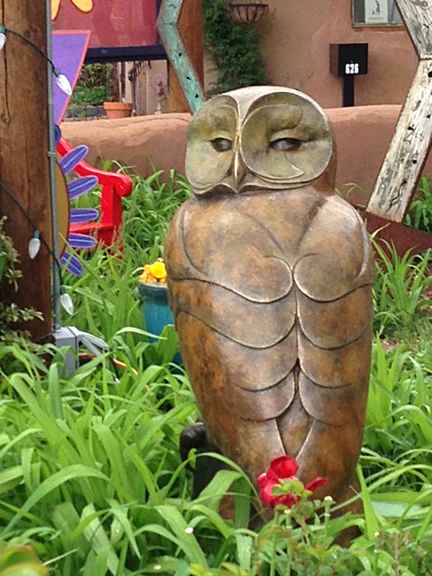Maintaining the Material of Your Garden Sculptures
The garden has always been a location that symbolizes tranquility and calmness. The absence of technology is often welcomed as people can just relax, take care of the plants, and admire all the sculptures on display. However, as beautiful as they may be, they can still be subject to damage and should be maintained properly.
It can seem straightforward to just take some cleaner out and water to clean it, but you have to consider the material of the garden sculpture you have. Some may need other methods that will be much more effective in making that piece of art as good as new.
Here are some of the common materials your garden sculpture are made of:
Metal Material
Metal sculptures can seem very modern and industrial in their beauty, but a majority of them are prone to rust. This can depend on your location and whether pollution is very prominent outdoors, just because of the salt levels building up in the air and traveling into the metal.
There are different types of metals, though, that all react differently, such as:
- Iron. Iron sculptures often develop a layer of rust on top of their surface when the air starts to take effect and corrode it. This isn’t necessarily a bad thing, as seeing iron morph and change into a rustic patina can actually make it seem that much more elegant, showing that beauty gets better in time. Just be mindful of it cracking under pressure when moving it around.
- Steel. Although not exactly metal, steel does contain properties of iron over it and can hold paint relatively well. However, garden sculpture with this type of material means that the color is prone to fading and removal. Transparent or clear yacht varnish can work if you want to preserve the current colors, or you can also commission an expert to repaint the piece annually.
- Aluminum. Considered a lightweight material, aluminum doesn’t rust the same way that iron does. However, aluminum is also subject to dirt and getting stains on its surface, which can affect the appearance of the overall garden sculpture. Depending on the weather conditions, consider taking the sculpture inside to polish it up. Allow a sculptor to adjust and add some touch-ups every now and then.
Wood Material
Wood sculptures always look like they were made for the outdoors because of the very fact that they were created from nature itself, but keep in mind to cover it and place it somewhere else during the rainy season. Be sure to ask your sculptor how to specifically care for the sculpture, but most materials will do with a yearly re-varnishing session.
Resin Material
If you’ve always dreamt of a colored glass sculpture but feared its fragility, resin is probably the next best material to put in your garden. It can be a dazzling look and considered low-maintenance compared to other sculpture types, but be mindful of the freezing temperatures. Otherwise, for dirt, a damp cloth and some non-abrasive cleaning liquid are all you’ll need.
Conclusion
Every material has different needs, so identifying what your pieces of art are made of is good to know before the maintenance process. Garden sculptures can be the pinnacle of the whole yard, so be sure to give them the tender love and care they need to be fully protected.
Want to get your own garden sculpture? Mark White Fine Art’s sculptures are displayed at Luca Decor in Santa Fe, NM. Visit today!



